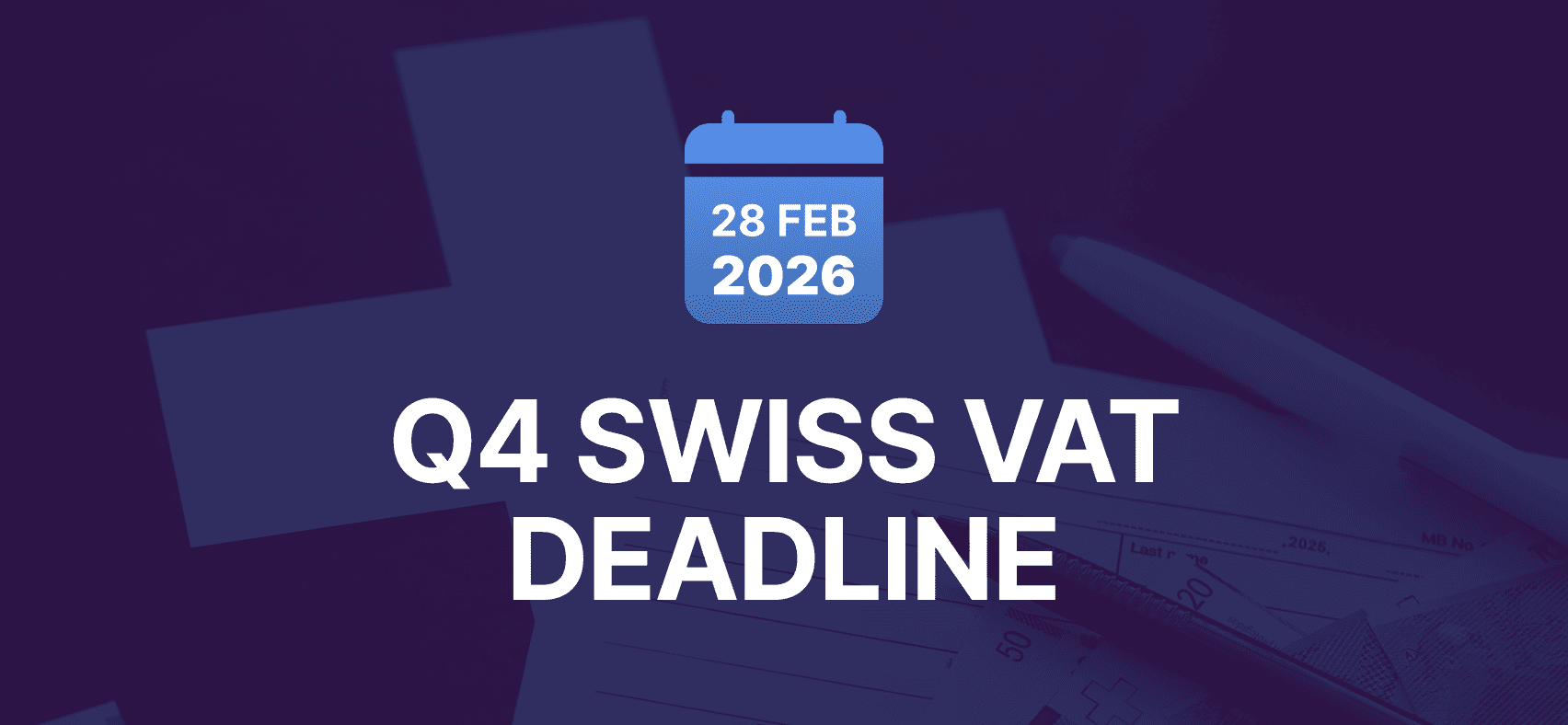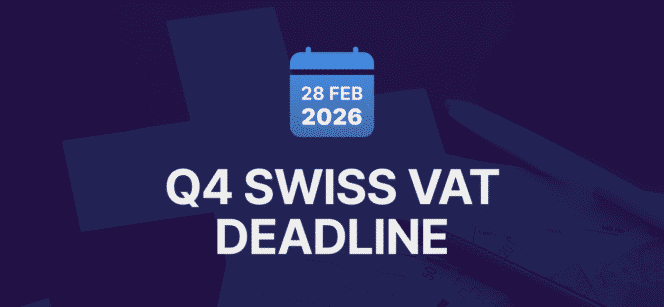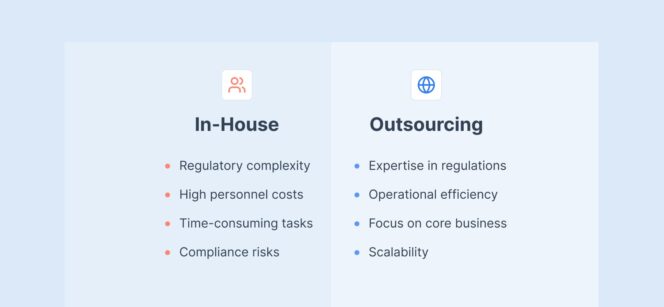Don’t miss Q4: your urgent guide to Swiss VAT filing & payment deadlines
The clock is ticking for your final VAT declaration of the financial year.

For thousands of Swiss small- and medium-sized businesses (SMEs), founders, and finance managers, the most critical date on the compliance calendar is almost here: 28 February 2026. This is the hard deadline for preparing, filing, and paying your Quarter 4 (Q4) Swiss VAT return for the period covering October, November, and December 2025.
Missing it leads to immediate consequences: late interest, administrative reminders, and the risk of an audit.
This comprehensive guide from LedgerPeek is designed to help you, the Swiss business owner, navigate the Q4 VAT process with confidence, avoid common and costly miscalculations, and ensure full compliance with Swiss VAT reporting requirements before the deadline.
The Q4 Swiss VAT deadline: everything you must know
The core focus for all Swiss businesses right now should be the 28 February 2026 deadline. This date applies to both the filing of the official VAT return (Form 105 or 106) and the payment of any resulting VAT liability.
Who is required to file VAT in Switzerland?
You must file a VAT return if your business is registered for Swiss VAT. This is generally mandatory if:
- Your business, regardless of its legal structure (sole proprietorship, GmbH, AG, etc.), generates an annual worldwide turnover from taxable services or goods of over CHF 100,000.
- For non-profit, charitable, or volunteer-run organisations, the threshold is CHF 150,000.
- For public institutions, the threshold is CHF 250,000.
If your turnover is below these amounts, you can voluntarily register. However, once registered, quarterly or half-yearly filing is mandatory.
Crucial data and documents to prepare
Before you begin the filing process, ensure you have the complete, final financial records for Q4 2025 (1 October – 31 December):
- Sales Ledger: Total turnover for the quarter, broken down by Swiss VAT rate (8.1%, 3.8%, 2.6%, and 0%).
- Purchase Ledger: Detailed records of all business expenses, including the VAT paid (input tax) on domestic purchases.
- Import/Export Documentation: Proof of cross-border transactions, including customs declarations and import VAT statements.
- Adjustments and Corrections: Records of any prior period adjustments or corrections required for the Q4 filing.
Step-by-step guide to preparing your Q4 VAT filing
Filing your Swiss VAT declaration does not have to be a confusing, last-minute rush. By following this structured, 6-step process, you can ensure accuracy and meet the deadline with ease.
Step 1: Gather and reconcile financial records for Q4
Your first task is to finalise the books for October, November, and December. Ensure all sales invoices have been issued and all expense receipts have been recorded and assigned to the correct accounts.
Step 2: Verify total turnover and thresholds
Though you are filing for a quarter, this is a critical moment to check your annualised turnover. Confirm you have accurately separated your sales according to the correct Swiss VAT rate, including any sales that fall under the 0% exemption (e.g., specific exports).
Step 3: Input sales and calculate output VAT
Calculate the total VAT due to the AFC (output VAT). This is derived from applying the correct tax rates:
- Standard rate (8.1%): Applies to most goods and services.
- Reduced rate (2.6%): Applies to essential items like foodstuffs, books, and pharmaceuticals.
- Special accommodation rate (3.8%): Applies to overnight accommodation services.
Step 4: Input expenses and calculate deductible input VAT
Now, calculate the VAT you can claim back (input VAT). This is the VAT paid on business expenses, which is deductible, provided the goods or services were used for your taxable turnover. Ensure you only deduct the VAT portion and not the gross amount.
Step 5: Verify cross-border transactions and reverse charge
- Imports: Ensure you have accounted for Import VAT, which must be reported and deducted, often offsetting each other.
- Services from abroad: Check for services received from foreign companies. In many cases, you must apply the Reverse Charge mechanism, where you declare and simultaneously deduct the VAT, but it must be correctly stated on the VAT return.
Step 6: Final reconciliation and submission via the AFC portal
The final step is to reconcile the totals:
Output VAT (Due to AFC) – Input VAT (Deductible) = Net VAT Liability/Refund
You then submit the completed electronic form via the official AFC portal. Remember, your Swiss VAT payment is also due by 28 February 2026.
Common errors that lead to rejected VAT filings
The primary goal of every finance manager is to avoid the dreaded AFC rejection or correction notice. These errors are incredibly common but entirely avoidable:
- Using the wrong tax rate: This is the most frequent mistake. Applying the standard rate (8.1%) to reduced-rate items (2.6%) or vice-versa results in immediate miscalculation. This is particularly prevalent during transitional periods or when dealing with mixed-rate invoices.
- Missing import/export VAT: Forgetting to declare or deduct Import VAT, or failing to properly document zero-rated exports, leads to incorrect reporting and potential underpayment or overpayment.
- Incorrect rounding: The AFC requires specific rounding rules, and discrepancies, even small ones, can trigger validation failures in the submission system.
- Forgetting quarterly adjustments: Certain transactions, such as private use of business assets or adjustments for bad debts, require quarterly attention.
- Misstating deductions (input tax): Claiming VAT on non-deductible expenses (e.g., certain entertainment costs) or claiming deductions without valid VAT-compliant receipts.
What happens if you miss the Q4 VAT deadline?
The VAT reporting deadline – 28 February 2026 – is non-negotiable. The AFC is quick to impose consequences for late filing or late payment.
- Late interest: If payment is not received by the deadline, late interest (currently 4.75% per annum, subject to change by the AFC) is applied immediately. This is calculated daily from 1 March 2026 until the date of payment.
- Administrative reminders: Failure to file will result in increasingly stern official reminders from the AFC.
- Penalties and potential audit: Persistent failure to comply or significant inaccuracies can lead to administrative penalties. In the worst-case scenario, the AFC may initiate an audit, which is time-consuming, costly, and highly disruptive to your business operations.
If you know you will be late, you must contact the AFC immediately to request a brief extension. However, this is granted on a case-by-case basis and does not waive the interest charge. The best approach is always preparation and timely submission.
File with confidence and avoid penalties
The Q4 Swiss VAT deadline of 28 February 2026 is not just an administrative hurdle; it’s a critical compliance checkpoint. By following this guide, you can confidently gather your data, perform the necessary checks, and ensure compliance with VAT reporting requirements.
The complexity of filing, differing tax rates, and the immediate threat of late interest make accuracy paramount. LedgerPeek provides expert support to ensure timely and compliant filing.
Don’t leave your Q4 VAT filing to the last minute and risk costly penalties or disruptive audits.
Ensure your Q4 VAT is filed accurately and on time — schedule a call with a LedgerPeek specialist today to discuss a secure, compliant VAT workflow.



